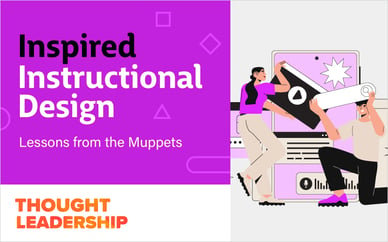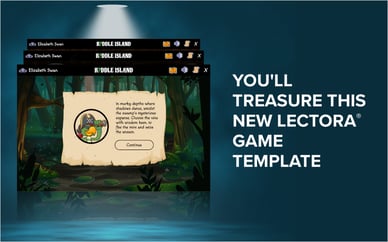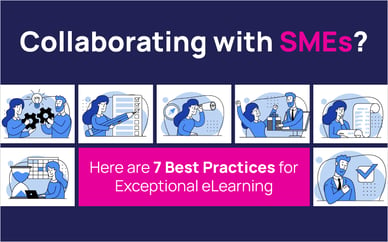In our previous post, we discussed a new learning approach—microlearning. The tactic involves breaking down concepts into smaller, bite-sized chunks in order to help learners retain more information. One RPS study found that microlearning improves an individual’s focus and long-term retention by 80%. The reason being learners only have to remember and digest smaller pieces of information which increases overall comprehension.
But why does microlearning work? What makes it so popular with today’s workforce? We cover the seven reasons why bite-sized learning is so effective in-depth in our eBook, The Power of Small Things and Baby Steps; a summary of these points can be found below.
- Our Brains are Wired for It
Our brains are not made to stay focused for hours on end. According to Dr. A.H. Johnson's study on the fluctuation of students’ attention span, most learners stay optimally focused on a topic for up to 18 minutes. After that, their attention wanes, no matter how interesting the concept. Microlearning delivers information in short bursts, reducing cognitive load and allowing learners to better process, learn, and retain information. - Consumer Behavior Reinforces It
Today’s consumers expect to receive information almost instantly. If they don’t, they’re highly likely to abandon their search. In terms of learning, most readers don’t understand—or care—why a large amount of content is needed to address their questions. Instead, they want short, simple courses or training that tells them what they need to know as fast as possible. - The Internet Enables It
It’s estimated that Google processes nearly 63,000 search queries per second. That translates into roughly 2 trillion searches every day. Each search result contains billions of bite-sized learning fragments that cater perfectly to shorter attention spans. Searchers can easily browse through results at their leisure, taking in as much or as little as they want. - Mobile Advances It
According to one study, millennials check their phone around 150 times every day. In addition to sending texts, browsing social media, and answering emails, they’re also looking for information. Leveraging mobile in a microlearning strategy not only puts information where learners are looking for it, but also encourages authors to simplify and streamline content to ensure a mobile-friendly experience. - Video Escalates It
Most of our knowledge comes from observing the patterns and behaviors of others, which is why video is an incredibly powerful learning resource. In fact, studies have found that training is 83% more effective than stand-alone text in terms of audience retention. By delivering content in short yet informative videos, the likelihood of learners not only paying attention to the information but retaining it is significantly increased. - The Modern Learner Demands It
It’s estimated that by 2025, millennials will make up 75% of the workforce and this growing millennial workforce is incredibly tech-savvy. They expect to learn, innovate, and create on the fly—not spend their time listening to a lengthy lecture or 200-slide presentation. Microlearning perfectly caters to these expectations by delivering information in the short, quick bursts today’s learners are accustomed to. - Ebbinghaus Would Endorse It
Hermann Ebbinghaus, a German psychologist, published a theory called the Ebbinghaus Forgetting Curve in 1885. He hypothesized that people quickly forget what they learn based on how difficult the concept was to learn and how meaningful it was to them. He argues that to decrease forgetfulness, content should be delivered in small things—essentially microlearning. Were he alive today, he’d likely be the biggest supporter of bite-sized learning.
In Closing
The numbers behind microlearning don’t lie. Today’s employees are more enthusiastic and attuned to bite-sized learning because it’s convenient, effective, and more engaging than traditional learning methods.
L&D leaders looking for a more effective way to train or teach employees should consider microlearning. The strategy is tailored to today’s millennial workforce and aligns better with consumer expectations.
To learn more about the benefits of microlearning, download our eBook: The Power of Small Things and Baby Steps.







